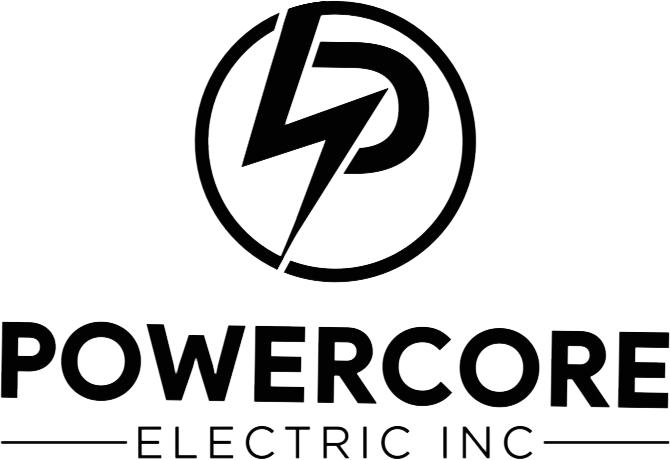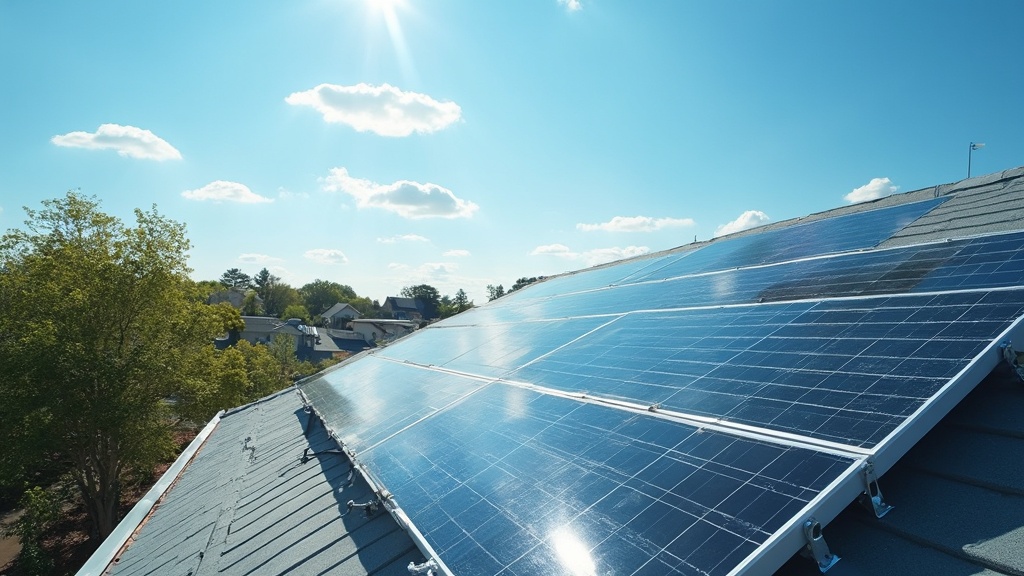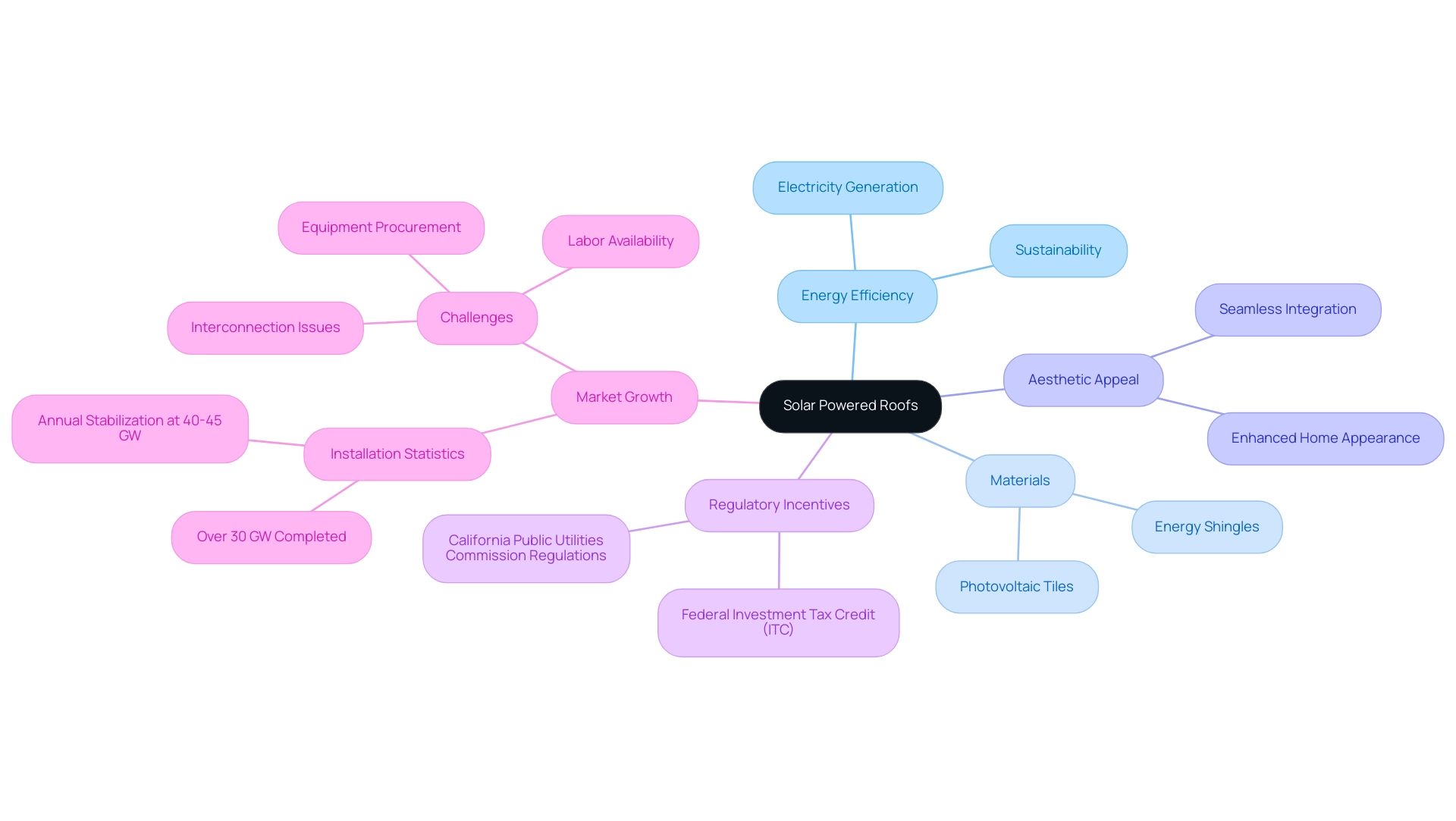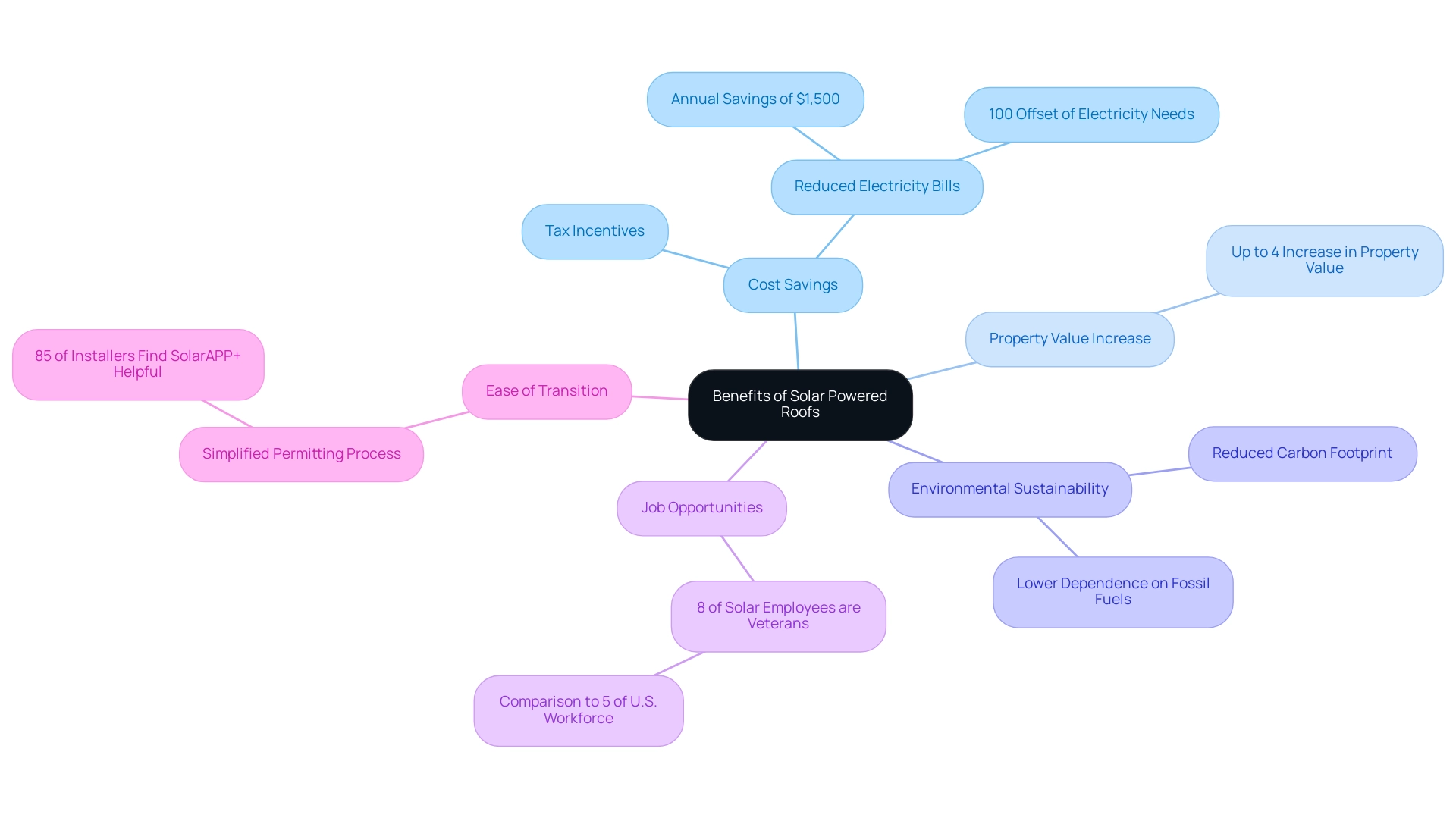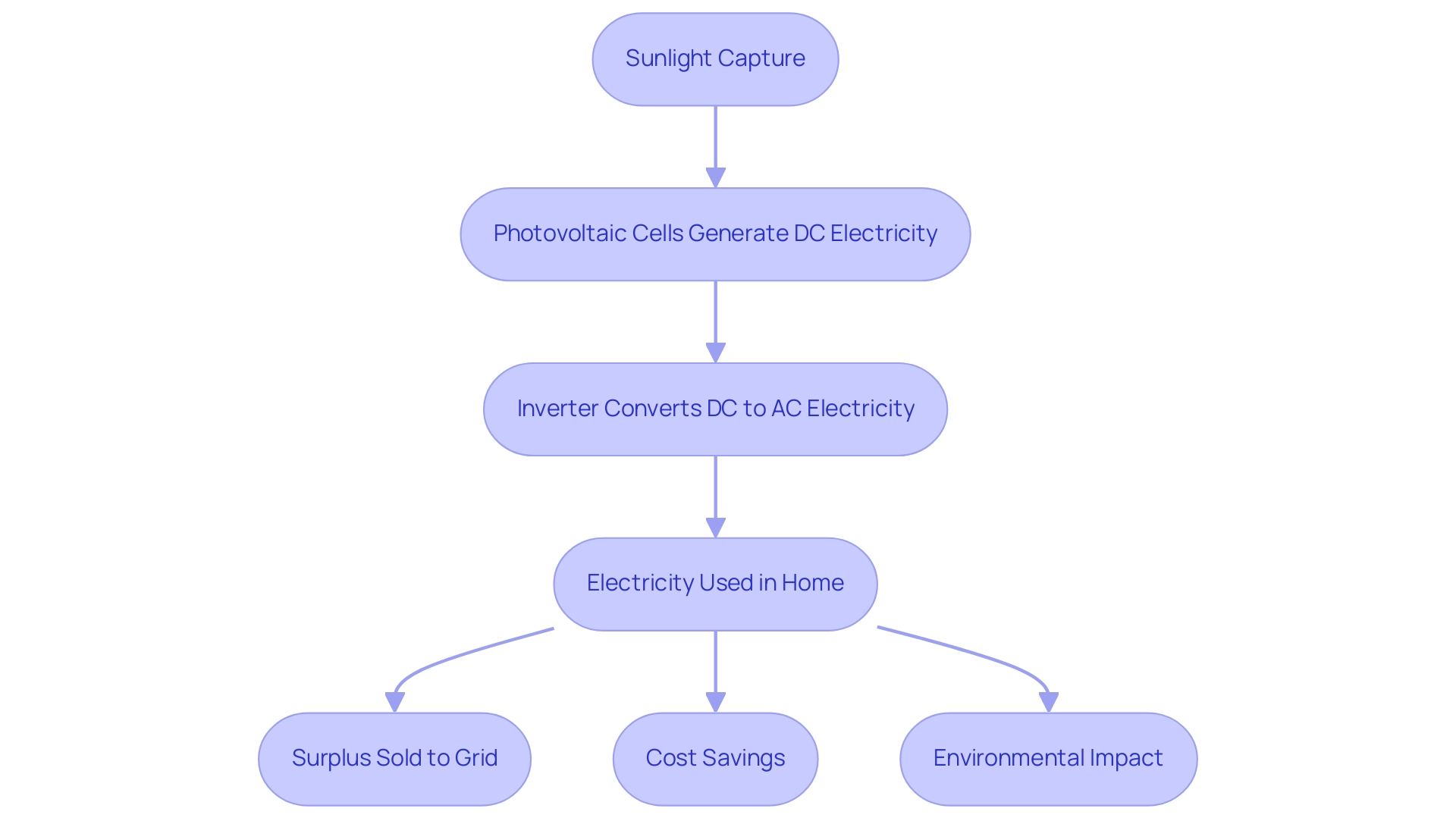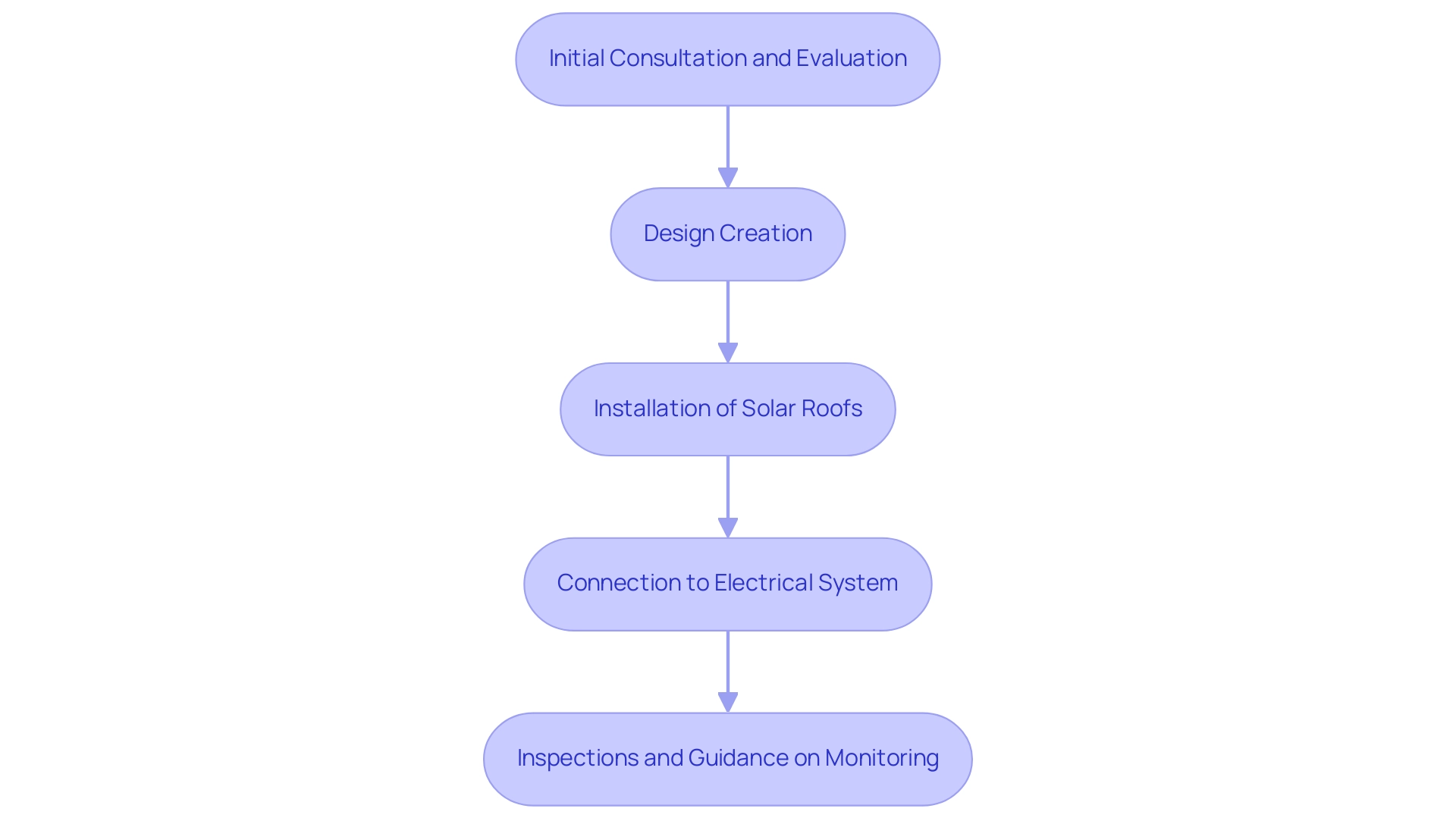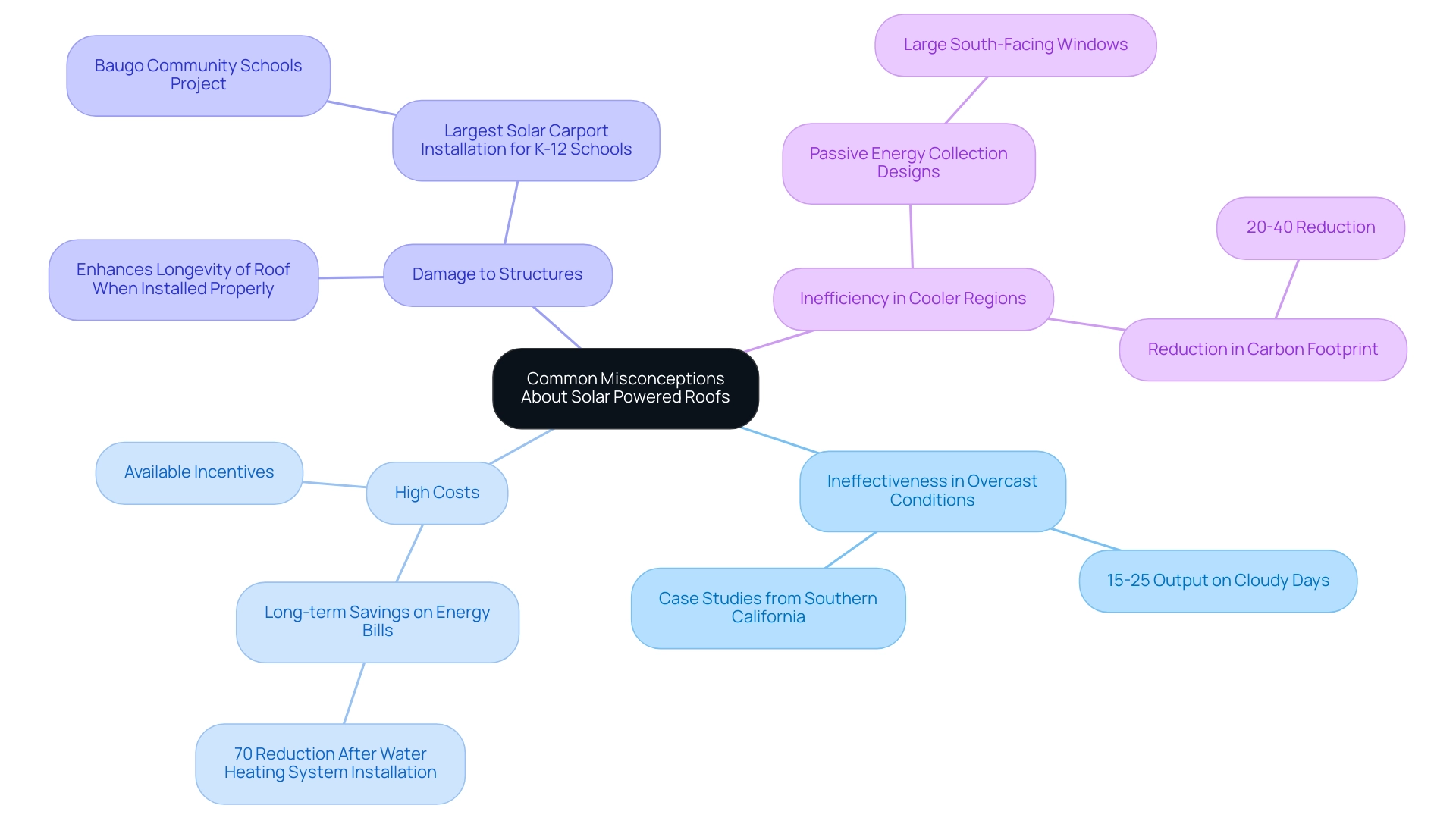Introduction
As homeowners increasingly seek sustainable solutions, solar-powered roofs have emerged as a game-changer in energy efficiency and environmental responsibility. These innovative roofing systems not only replace traditional materials with sleek, energy-generating shingles but also offer a stylish way to harness the sun’s power.
With the promise of reduced electricity bills and enhanced property value, the appeal of solar roofs is undeniable. In regions like Northern California, the push for solar energy is further bolstered by supportive regulations and financial incentives, making the transition to solar both practical and rewarding.
This article delves into the ins and outs of solar-powered roofs, exploring their benefits, technology, installation process, and common misconceptions that might hold homeowners back from embracing this eco-friendly option.
Whether considering a solar upgrade or simply curious about the technology, this guide will illuminate the path toward a greener home.
Understanding Solar Powered Roofs: An Overview
Solar powered roofs are an example of energy-efficient surfaces that harness sunlight, representing an innovative leap in home energy solutions and perfectly aligning with the values of eco-conscious homeowners. These state-of-the-art solar powered roofs incorporate photovoltaic (PV) panels directly into the structure, unlike conventional panels that rest on existing surfaces. By substituting traditional roofing materials with solar powered roofs, these photovoltaic coverings not only produce electricity from sunlight but also enhance the overall appearance of your home.
Typically made from energy shingles or tiles, solar powered roofs capture sunlight to generate usable electricity, offering an efficient energy source without compromising style. This seamless integration of solar powered roofs appeals to environmentally-minded residents who value both sustainability and aesthetics. In Northern California, where Powercore Electric provides top-tier residential panel installation services, homeowners can gain substantially from such advancements.
Recent regulations by the California Public Utilities Commission further incentivize the adoption of renewable energy, ensuring that new customers will receive at least 75% less from utility companies compared to current rates. Homeowners can benefit from government initiatives such as the Federal Investment Tax Credit (ITC), which permits a substantial tax credit on renewable energy installations. As the photovoltaic sector continues to expand, with over 30 GW of installations finished and an annual stabilization anticipated around 40-45 GW, this technology is establishing itself as a prominent source of new power capacity in the U.S., supported by the Inflation Reduction Act.
This favorable perspective for photovoltaic systems emphasizes the significance of sustainable power alternatives and independence for homeowners. For more information on how to transition to solar energy or to get a free quote, contact Powercore Electric today!
The Benefits of Solar Powered Roofs: Why Go Solar?
Installing solar powered roofs comes with a wealth of benefits that can profoundly impact your home and wallet. To begin with, these structures can drastically reduce your electricity expenses by harnessing the sun’s energy—imagine saving around $1,500 each year if your home generates 10,000 kWh annually! Homeowners often find that their return on investment occurs within just a few years due to these substantial savings.
Moreover, photovoltaic roofs not only help you save money but also enhance your property’s appeal. Homes equipped with renewable energy technology are increasingly appealing to eco-conscious buyers, which can result in a significant rise in property value. Expert views indicate that properties with photovoltaic systems can experience a value rise of up to 4%, a compelling statistic for any property owner contemplating an enhancement.
California homeowners gain from Powercore Electric’s regional knowledge and dedication to unparalleled quality workmanship, ensuring your installation meets the highest standards. Additionally, states like California are sweetening the deal with tax incentives and rebates for renewable energy installations, making the upfront costs much more manageable. Beyond the financial advantages, adopting photovoltaic systems plays a vital role in enhancing environmental sustainability by lowering our dependence on fossil fuels and reducing carbon footprints.
Furthermore, it’s worth noting that 8% of all renewable energy employees are veterans, compared to 5% of the U.S. workforce, highlighting the industry as an opportunity for veterans. For anyone seeking to create a positive impact while enjoying the advantages of modern technology, solar powered roofs are an excellent option. As 85% of installers who work with NREL’s SolarAPP+ permitting software say it makes permitting significantly easier, the process of transitioning to renewable energy is not only beneficial but also increasingly accessible.
With Powercore Electric, you can trust that your energy journey will be guided by a customer-first approach, making your experience seamless and stress-free. Don’t merely rely on our assurance—here’s a comment from one of our pleased clients: “Powercore Electric changed my home with their energy-efficient panel installation. The savings have been incredible, and the team was professional and attentive throughout the process!”
Ready to make the switch? Contact us today for your free, personalized estimate and discover how solar can work for you!
How Solar Powered Roofs Work: The Technology Behind the Panels
Solar powered roofs are a fantastic solution for eco-conscious homeowners seeking to harness the sun’s energy while contributing to a sustainable future. Utilizing advanced photovoltaic technology, these structures seamlessly convert sunlight into electricity. Each shingle is equipped with cells that capture sunlight and generate direct current (DC) electricity.
This DC is then transformed into alternating current (AC) electricity through an inverter, which is the standard electricity used in most homes. This procedure enables property owners to utilize sunlight directly and link to the grid, offering the chance to sell any surplus power back to utility providers or draw from the grid as required.
Recent innovations in photovoltaic technology have made these structures even more efficient and user-friendly. Numerous systems now incorporate intelligent technology that enhances power production based on current weather conditions and personal usage patterns, ensuring residents can maximize their savings. For instance, thermal efficiency ratings for photovoltaic roofs can reach up to 80%, showcasing their ability to effectively convert sunlight into usable energy.
Moreover, water heating systems powered by the sun can save residents between $400 to $600 each year on utility expenses, according to estimates from the Energy Department. Additionally, with 85% of installers utilizing NREL’s SolarAPP+ permitting software indicating a streamlined permitting process, embracing renewable energy solutions has never been simpler.
The increasing interest in photovoltaic technology is clear, as the global PV inverter market share by shipments in 2022 shows more property owners are investing in these systems. Looking ahead, the global capacity for new photovoltaic installations is expected to soar to 876 GW by 2028, with manufacturing capacity projected to reach nearly 1,000 GW in 2024. The recent rise in the U.S. quota for tariff-free silicon solar cell imports from 5 GW to 12.5 GW indicates a notable trend in the market, enabling wider access to solar technology.
As an industry engineer aptly states, ‘The advancements in photovoltaic technology are not only making solar installations more efficient but also more attainable for homeowners, paving the way for a sustainable power future.’ With these advancements, solar powered roofs stand out as a wise investment, offering not just cost savings and power independence but also a significant step toward a greener planet.
Installation Process: What to Expect When Going Solar
Installing solar powered roofs is an exciting journey that involves several important steps, all designed to power and protect your home. It starts with a welcoming discussion from Powercore Electric, where specialists evaluate your home’s power requirements and examine the roof’s appropriateness for renewable systems, ensuring you’re prepared for success. This is your chance to ask questions and get to know the process!
Following this, a detailed design for solar powered roofs is crafted, taking into account the unique layout and orientation of your roof—this step is crucial for optimizing energy production and maximizing your savings. Once you give the thumbs up on the design, the installation team swings into action, removing the existing roofing material and carefully laying down the solar powered roofs. Depending on the size of your roof and the weather, this installation phase typically takes just a few days.
After the shingles are installed, the next step involves connecting the system to your home’s electrical setup, followed by thorough inspections to ensure everything is working perfectly. You will also receive guidance on how to monitor your system’s performance, assisting you in maximizing your savings. With the worldwide production capability of photovoltaic systems expected to reach almost 1,000 GW in 2024, adopting renewable power is a wise decision for residents aiming to support a more sustainable future.
Furthermore, numerous installers employ NREL’s SolarAPP+ software, which has simplified the permitting process considerably for residents, facilitating your shift to renewable energy. Moreover, the renewable energy industry is not only about energy savings but also about community impact; for instance, 8% of employees in this field are veterans, showcasing the sector’s potential for job creation and support for sustainable practices. Whether you are thinking about Tesla home chargers or investigating different government initiatives, there are plenty of resources accessible to assist environmentally aware residents, including those in Long Beach, on their renewable energy journey.
Common Misconceptions About Solar Powered Roofs
When it comes to solar powered roofs, many homeowners encounter misconceptions that can cloud their judgment. A popular myth suggests that photovoltaic panels are only effective in sunny climates, but the reality is quite different. For instance, case studies from Southern California illustrate that even on overcast days, photovoltaic technology can generate about 15-25% of its usual output, showcasing the reliability of these systems in varying weather conditions.
Furthermore, many panel manufacturers provide an average 10-year product warranty and a 25-year performance warranty, underscoring the durability of this technology. Another widespread notion is that photovoltaic panels are excessively costly. However, when you consider the long-term savings on energy bills—like the 70% reduction experienced by a household after installing a water heating system—and the various incentives available, the initial investment often pays off over time.
Additionally, some homeowners may worry about potential damage to their existing structure. The truth is, when installed properly, photovoltaic roofs can actually enhance the longevity of your roof. Projects like the largest carport installation for a K-12 school district in Indiana highlight the practical benefits of renewable energy technology.
Moreover, passive energy collection designs in cooler regions have proven to be effective, capturing sunlight through large south-facing windows to reduce energy expenses. By adopting renewable heating technologies, households can also significantly lower their carbon footprint, with reductions ranging from 20 to 40 percent. By dispelling these myths, potential buyers can feel more empowered and informed as they explore the economic and environmental benefits of adopting solar powered roofs in their homes.
Conclusion
The journey toward embracing solar-powered roofs is not just about harnessing the sun’s energy; it’s about making a meaningful investment in both your home and the planet. With their ability to significantly reduce electricity bills, enhance property value, and promote environmental sustainability, solar roofs stand out as a smart choice for homeowners. The technology behind these roofs is continually advancing, ensuring efficiency and ease of use, which makes transitioning to solar energy more accessible than ever.
Understanding the installation process can alleviate any apprehensions homeowners may have. From the initial consultation to the final inspections, each step is designed to support a seamless transition to solar energy. Moreover, by addressing common misconceptions about solar roofs, potential adopters can feel confident in their decision to invest in this eco-friendly solution.
As the demand for solar technology grows and regulations become increasingly supportive, the opportunity to contribute to a sustainable future while enjoying financial benefits is clearer than ever. For those considering this upgrade, engaging with experienced providers like Powercore Electric can facilitate a smooth journey toward a greener home. Embracing solar-powered roofs is not just a trend; it’s a step toward energy independence and a sustainable lifestyle that benefits both homeowners and the environment.
